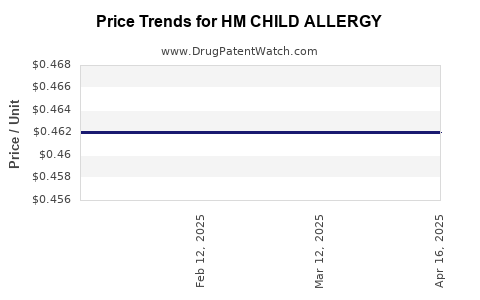Drug Price Trends for HM CHILD ALLERGY
✉ Email this page to a colleague

Average Pharmacy Cost for HM CHILD ALLERGY
| Drug Name | NDC | Price/Unit ($) | Unit | Date |
|---|---|---|---|---|
| HM CHILD ALLERGY RLF 5 MG CHEW | 62011-0371-01 | 0.45737 | EACH | 2024-10-23 |
| HM CHILD ALLERGY RLF 5 MG CHEW | 62011-0371-01 | 0.45309 | EACH | 2024-09-18 |
| >Drug Name | >NDC | >Price/Unit ($) | >Unit | >Date |


